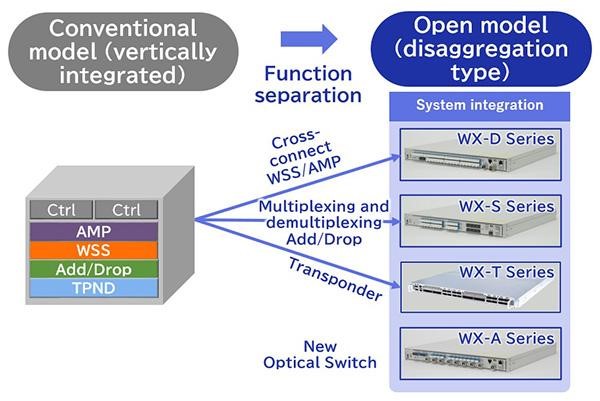NEC Corporation is driving expansion of “All Optical Networks” with the introduction of its SpectralWave WX Series – a lineup of open specifications-compliant, open optical transport products. Initially, four products will be released on October 1, 2022.
The push for “All Optical Networks” is a marked shift in transport networks, which have conventionally required both optical and electrical technologies. It will be simplified to only optical transmission technology from end-to-end in the future.
NEC envisions “All Optical Networks” as a next-generation, environmentally-friendly infrastructure that will lead to the realization of digital twins, social transformation and the creation of new services and industries. Through the provision of these products, NEC will help deploy transport networks with large capacity, low latency and multiple connections, as well as advanced security, robustness and power-saving.

Overview of the SpectralWave WX Series
NEC's new open optical transmission devices support multi-vendor configurations, allowing customers to procure and combine equipment from multiple vendors in accordance with their needs.
The lineup is built based on standards defined by Open ROADM and Telecom Infra Project's (TIP) Phoenix initiative. The compliance with these open specifications enables these devices to support configurations that connect to the function blocks of APN-T, APN-G and APN-I as defined by Open APN and under examination by the IOWN Global Forum.
In addition, NEC has well-established experience and know-how in large-scale carrier networks to provide system integration in multi-vendor environments using open optical transmission devices from the development to the operational phases.
"NEC aims to market these products to telecommunications carriers, electric power companies and data center operators throughout the world," said Sou Satou, senior director, network solutions business division, NEC Corporation. "Going forward, NEC will continue to contribute to the creation and expansion of open optical networks, aiming to acquire 25% of the future optical transport market by providing products that have grown in capacity from the current 400G to 800G and equipment that supports longer distances."











